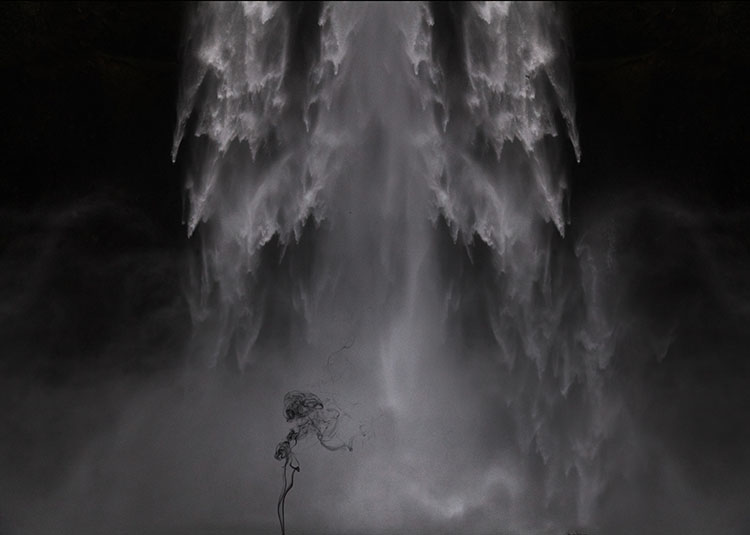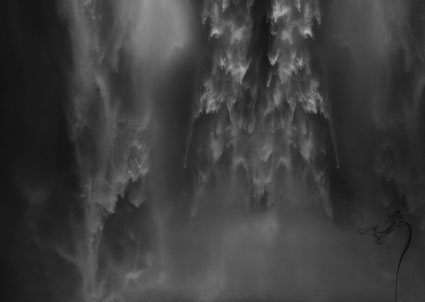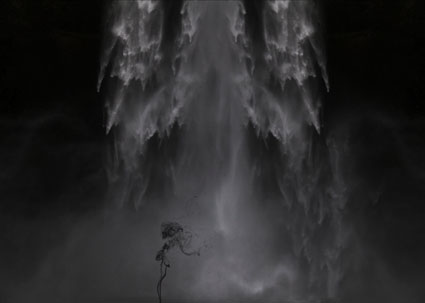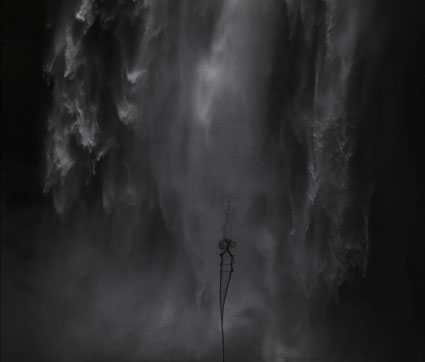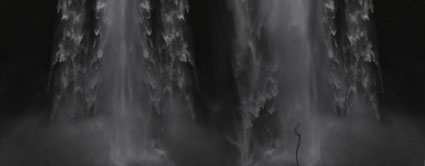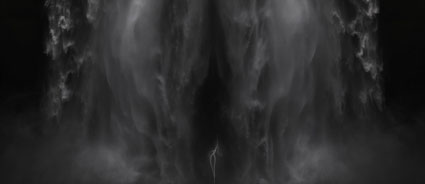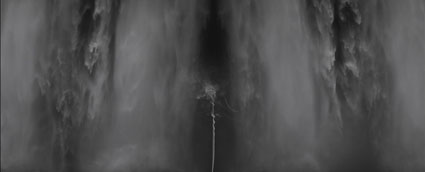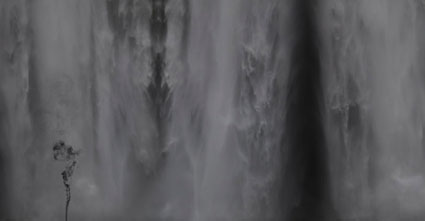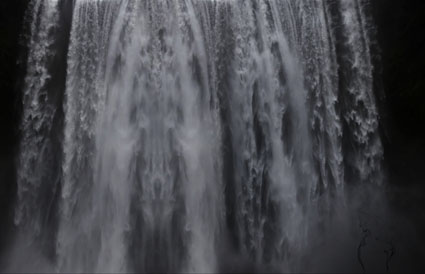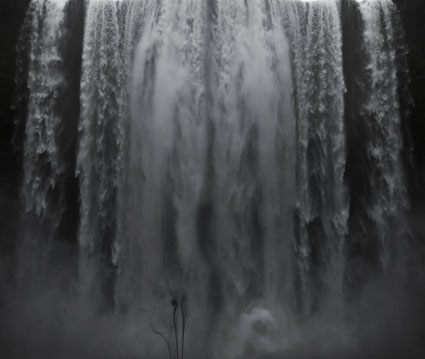Return To The Same Well
Suffusion XV, Skogafoss, Iceland, 2012
To find what I was looking for, it took three visits to this waterfall.
On the first visit, I made conventional postcards surveying the site with a curious eye: cliffs, grass, moss, waterfall, pool, river, rock, vapor, rainbow, sun, clouds, rain, tourists, and horses. The images I made were competent – and nothing more.
On the second visit, I identified my primary focus – the fast-moving complex patterns the water made as it fell in waves through the air. Images that isolated these patterns contained a number of qualities that I was excited about, both something related to what I had been developing in other images and something new. I had found what I was looking for. But, when I evaluated the images I made and developed the material further (enhancing the patterns by combining them and adding new elements), it became clear that I needed more material to make a complete statement. During development, I made notes and sketches to chart my progress and refine my ideas.
On the third visit, I walked up to the waterfall and stood in front of it, silently watching for new patterns and making exposures for the better part of an hour. I was thrilled to be immersed in a magical moment, completely focused and undisturbed. At the end of this session, my good friend and colleague Arthur Meyerson asked, “Did you get anything?” “Yes,” I responded, “I got a body of work.”
With so many wonderful possibilities out there, why would you return to the same well more than once? Let me count the reasons.
1 You’ll get to spend more time with your favorite people, places, or things.
Passion energizes.
2 You’ll have an opportunity to make the images that almost worked or that you missed.
Make a list to learn from your mistakes and create a working plan.
3 You’ll have an opportunity to improve your images.
Practice makes perfect.
4 You’ll learn more about a place.
By increasing your understanding of the places you photograph, your photographs will become more interesting.
5 You’ll see changes in the place.
Time reveals new things, changing subjects and changing us.
6 You’ll see new things.
Having first found the images that come to you naturally, you’ll later find yourself challenged to look for other kinds of images, which will stimulate your creativity and increase your visual versatility.
7 You’ll learn more about yourself. You’ll be called to identify your habits, changes, strengths and weaknesses, hopes and purpose.
Just because we see new things doesn’t mean we will see in new ways. In fact, it’s often during times when we are engaged by a great deal of new information that we fall back on our habits. When we see the same things again, we are challenged to see in new ways and/or deepen the ways we see them.
Questions
What things would be most valuable for you to revisit?
How many new ways can you imagine approaching a subject?
What do you hope to accomplish when you revisit them?
What can you learn about yourself when you return – preferences, tendencies, habits, core strengths, areas for improvement, etc.?


